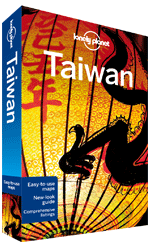This sign is advertisement for shark extract, only instead of using the Japanese loanword for extract, エキス, as originally intended (and which is correctly written on the sign hanging above the entrance), the sign maker forgot a stroke here, leaving us with エキフ.
As anyone who has ever been to T'áiwān 台灣 can tell you, night markets 夜市 are an intrinsic part of local life. Following Amber's swimming lesson this evening (in which she successfully passed her month-end exam, and thus has been promoted to Level 18, a feat she was extremely proud of), we visited one of Fēngyuán's 豐原 local yèhshìh, the Húlutūn Tourist Night Market 葫蘆墩觀光夜市:
Unlike the more well-known markets, such as the one in T'áichūng's 臺中 Féngchiǎ 逢甲 area, Huludun (as well as the others here in Fengyuan) is smaller, quieter and only open once or twice a week (Fridays and Saturdays in this case). In other words, it's very local (the few tourists that visit Fengyuan tend to flock to the Miàotūng 廟東 food street in the downtown area). Though you can buy things like cheap, Made in China clothing and cheap, dangerous, Made in China toys, the main reason for visiting virtually any night market is to eat. Which is what we did...
My wife is getting ready to dig into one of her favorites, stinky tofu 臭豆腐. For those of you who aren't familiar with ch'òutòufu, the name should say it all (or can you follow this Wikipedia link). Some misguided foreign residents claim to like it in a doomed-to-be-ultimately unsuccessful effort to try and "fit in" to the local culture. Others such as myself are quite content to remain barbarians at the gates when it comes to these island "delicacies". My daughter is a bicultural child, but when it comes to stinky tofu, she lets her American side show. Tonight she did so by asking for steak (the steam is a result of the fact the temperature was around 15C/60F this evening - chilly by Taiwanese standards).
In addition to eating, we ate some more, including fried pork and sausages. Here is Amber munching on some quail eggs:
Chia Hsiang is a bakery based in the southern city of T'áinán 臺南 that sells its baked goods at night markets the length and breadth of Taiwan. Well, the length anyway, as I'm sure there aren't too many markets in the central mountains 中央山脈.
Next to eating, the most popular activities at night markets are games. Here Amber enjoys a carnival ride under the protective watch of a large SpongeBob SquarePants, no doubt fully licensed from Nickelodeon, because, as we all know, a Taiwanese night market would never engage in activities that could even be remotely construed as being theft of intellectual property:
美味しく楽しむ。健康する!












































